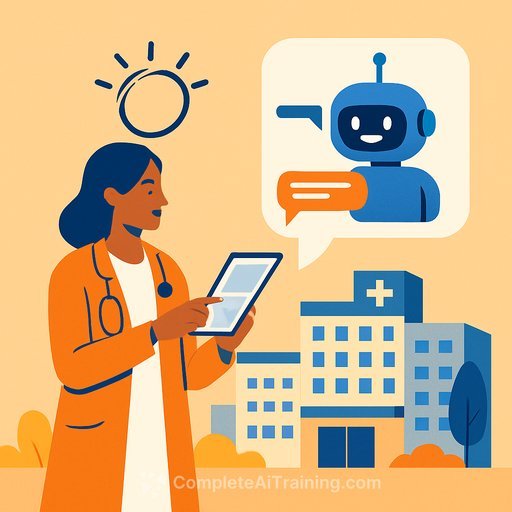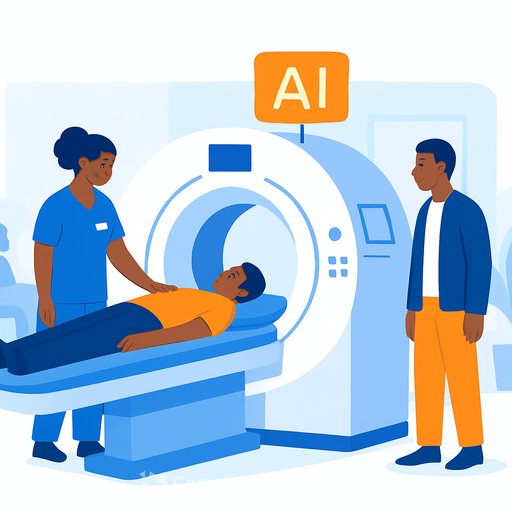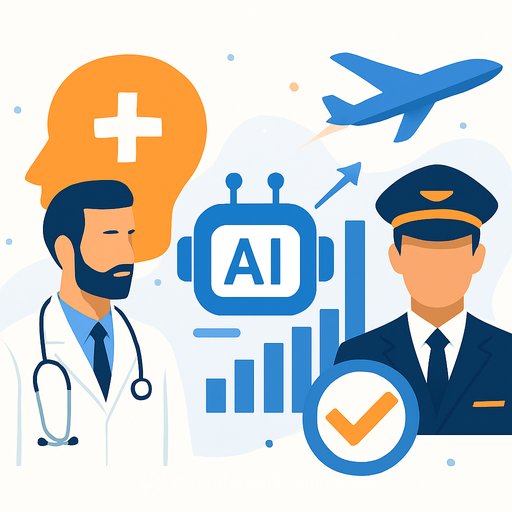The Complete Guide to Using AI in the Healthcare Industry in the Philippines (2025)
Last Updated: September 13, 2025
TL;DR: AI in Philippine healthcare is moving from pilots to care. Estimated 2025 AI market: USD 6.85B within a fast-growing eHealth market (USD 2.82B in 2024 to USD 10.77B by 2033; 16.05% CAGR). Priority areas: diagnostics, telemedicine, dengue forecasting, data governance, and workforce training.
Table of Contents
- What is AI in Healthcare and How It Applies to the Philippines
- What is the Future of AI in Healthcare 2025 and What It Means for the Philippines
- What is the Future of AI in the Philippines? Healthcare-Specific Outlook
- What is the AI Strategy Roadmap in the Philippines? Policy and Implementation
- Data, Privacy, and Responsible AI Practices in the Philippines' Healthcare Sector
- Key AI Technologies and Use Cases in Philippines Healthcare (2025)
- What 5 Companies in the Philippines Use Health Informatics?
- How to Start Using AI in Your Philippine Healthcare Practice: A Beginner's Checklist
- Conclusion and Next Steps for AI in Healthcare in the Philippines
- Frequently Asked Questions
What is AI in Healthcare and How It Applies to the Philippines
Think of AI as a set of practical tools that reduce repetitive data work so clinicians can focus on patients. In the Philippines, this includes GPT-style assistants that summarize messy EHRs, transcribe teleconsultations, and triage in Tagalog or Cebuano to extend access beyond major cities.
Front-desk automation features (for example, no-show reduction and smart reminders) help clinics run tighter schedules. These tools match local priorities: faster diagnostics in tertiary centers, support for rural health units, and dengue forecasting to guide barangay planning. The risks are familiar-data governance, bias, and AI hallucinations-so validation and oversight are non-negotiable.
"The AI doesn't choose its training data… professionals pre-select data and feed it into the algorithm."
A simple example: a community nurse receives a two-line AI summary of a patient's history on her phone before sunrise. That small time-saver can translate into faster, safer care decisions.
What is the Future of AI in Healthcare 2025 and What It Means for the Philippines
The near-term outlook is practical and uneven. Momentum comes from tools that save time and target real problems-ambient scribing, imaging decision-support, predictive analytics, and multilingual assistants-rather than hype.
Focus on "must-have" pilots with clear ROI: ambient listening to cut documentation burden, RAG-backed assistants for accurate staff Q&A, and AI triage linked to referral pathways. Explore high-upside bets like digital twins and autonomous diagnostics with strong guardrails and clear clinical supervision.
Public health gains are visible in dengue forecasting (e.g., UP Davao LSTM work), improving barangay-level resource planning. The operating rule for leaders: scale proven automation, pilot high-impact diagnostics, and pair every rollout with strong governance so an AI flag routes a patient to faster care-not added risk.
What is the Future of AI in the Philippines? Healthcare-Specific Outlook
Healthcare is digitizing at speed. Telemedicine, EHRs, remote monitoring, and chronic-disease management are pulling in investment, while regional hubs and AI diagnostics widen access.
Practical wins: remote glucose monitoring and wearables for real-time alerts, RAG assistants that clarify messy charts, and dengue models that guide stock and staffing. Prioritize deployments where connectivity, training, and clinical oversight already exist.
- 2024 Philippines eHealth Market Size: USD 2,820.00M
- 2033 Forecast: USD 10,766.03M
- CAGR (2025-2033): 16.05%
- Connected Healthcare CAGR (2024-2032): 14.70%
What is the AI Strategy Roadmap in the Philippines? Policy and Implementation
Policy is shifting from scattered guidance to a coordinated plan. NEDA calls for a unified national AI strategy and a national data-governance framework led by the Philippine Statistics Authority. DTI's National AI Strategy Roadmap 2.0 (NAISR 2.0) emphasizes ethics alignment, R&D financing, and sector pilots for responsible adoption.
Complementary moves from NPC and DICT, plus training for policymakers, point to a whole-of-society approach. The goal: scale pilots that reduce wait times and diagnostic backlogs while keeping accountability and explainability central.
- NAISR 2.0 public launch: July 3, 2024
- R&D budget target: Grow from ~0.3% to 1% of GDP
- Estimated annual GDP uplift from AI: PHP 2.6 trillion
- Recommended governance lead: Philippine Statistics Authority
DTI: National AI Strategy updates
Data, Privacy, and Responsible AI Practices in the Philippines' Healthcare Sector
The Data Privacy Act of 2012 sets the baseline. NPC's AI guidance (Advisory No. 2024-04) specifies transparency, accountability, fairness, lawful basis, accuracy and minimization, plus data-subject rights and access to human intervention. Enforcement includes breach notification and material fines, so governance must be part of clinical workflow.
- NPC AI Advisory: Advisory No. 2024-04 (Dec 19, 2024)
- Breach notification: Typically within 72 hours to NPC and affected data subjects
- Maximum administrative fine: Up to PHP 5,000,000 per serious violation
- DPO/DPS registration thresholds: e.g., 250+ employees or processing sensitive data of 1,000+ individuals
Pair privacy-by-design, a designated DPO, and regular PIAs with technical safeguards such as encryption and anonymization. Validate AI on Philippine data, keep humans in the loop, and log decisions for traceability.
Key AI Technologies and Use Cases in Philippines Healthcare (2025)
Radiology leads adoption. The Medical City uses Lunit for mammography and chest X-rays, boosting finalization rates and speeding reads. Ilocos Training and Regional Medical Center installed an AI-enabled, helium-free 1.5T MRI that cuts downtime and costs and improves prenatal and oncology detection.
Cloud and foundation models are bringing images, notes, and labs into one view for faster decisions. Meanwhile, RAG chat assistants and generative EHR summaries reduce paperwork and enable triage in local languages. At the public-health level, LSTM dengue forecasting helps barangay teams plan supplies and staffing.
- AI in Medical Imaging market (2024): USD 1,003.23M
- Philippines AI in Healthcare (2025 estimate): USD 6.85B
- Philippines AI in Healthcare (2031 forecast): USD 21.47B
"MRI, being a superior diagnostic imaging modality, will support our vision for tertiary specialised care, helping us in the early recognition of various diseases," said Dr. Unity Cortez.
What 5 Companies in the Philippines Use Health Informatics?
- mWell (Metro Pacific Health Tech): Digital Health ID, telemedicine, wearables, and portable digital clinics that bring care to remote barangays.
- Metro Pacific Health: A large hospital network investing in data and patient-centric systems across hospitals and outpatient centers.
- Medi Linx Laboratory: Centralized lab operations and shared lab data to speed and standardize results delivery.
- Makati Medical Center: Networked clinical workflows and hospital informatics embedded in daily operations.
- Asian Hospital & Medical Center: Clinical innovation programs and specialty informatics to improve patient experience.
"As the Philippines' healthcare mega app, mWell's innovative digital solutions enable us to respond to our countrymen's needs, ensuring good health for economic productivity and nation-building through a fully integrated, sustainable, and future-proof digital platform."
How to Start Using AI in Your Philippine Healthcare Practice: A Beginner's Checklist
- 1) Pick a high-friction task: Documentation, triage calls, or scheduling. Run a low-risk pilot with clear metrics (e.g., ambient scribe hours saved per week).
- 2) Partner locally: Engage your LGU and explore DOST-PCHRD/DFTH hubs. Tap programs like eHATID (already deployed in 450+ LGUs) for offline-ready tools and support.
- 3) Lock down privacy and validation: Follow NPC guidance, test on Philippine data, and prevent clinical hallucinations with retrieval-grounded designs.
- 4) Build a cross-functional team: Clinician, IT, and DPO. Run weekly audits, keep humans in the loop, and log exceptions.
- 5) Prove ROI, then scale: Expand only after measurable gains (shorter wait times, fewer referrals, faster finalization) and a documented governance plan.
The payoff is tangible: a barangay nurse reads a two-line, validated AI summary before dawn and treats locally-saving a costly trip while protecting patient rights.
"We didn't just digitise healthcare. We've changed how an entire city experiences medical care," said Mayor Binay.
Conclusion and Next Steps for AI in Healthcare in the Philippines
The path is clear: scale what works, validate locally, and keep clinicians in control. Prioritize dengue forecasting, generative EHR summaries, and imaging decision-support that reduce backlogs and speed care.
Pair every deployment with training and governance. Short, job-focused programs that teach prompt writing, tool selection, and privacy-by-design turn policy into practice. "AI isn't only for the rich," said Dr. Antonio Miguel L. Dans-so make it usable, safe, and measurable across the archipelago.
Looking for structured training options that fit clinical workflows? Explore practical courses and certifications here: Courses by job and Popular certifications.
For context, a focused option cited in this guide: "AI Essentials for Work" (15 weeks; early bird USD 3,582 / regular USD 3,942) that covers prompt writing, AI tools, and job-based skills.
Frequently Asked Questions
What is AI in healthcare and how is it being applied in the Philippines in 2025?
It's a toolkit: image-reading algorithms, ambient scribes, multilingual chatbots, RAG assistants, and predictive analytics that free clinicians from repetitive work. In the Philippines, common uses include EHR summarization, teleconsult transcription in Tagalog/Cebuano, AI triage with referral pathways, radiology decision-support, telemedicine for remote barangays, and dengue forecasting for resource planning.
What is the market and near-term outlook for AI and eHealth in the Philippines?
eHealth is set to grow from USD 2,820.00M (2024) to USD 10,766.03M (2033), a 16.05% CAGR through 2033. AI in Philippine healthcare is estimated at USD 6.85B in 2025 with a forecast of USD 21.47B by 2031. Adoption will be pragmatic-start with high-ROI pilots like ambient scribing, RAG assistants, AI imaging, dengue forecasting, and remote monitoring.
What policies, data-privacy rules and governance should providers follow when deploying AI?
Follow the Data Privacy Act of 2012 and NPC's AI guidance (Advisory No. 2024-04). Core duties include transparency, accountability, lawful processing, accuracy, minimization, and human oversight. Expect privacy-by-design, DPO designation where required, PIAs, 72-hour breach notifications, and potential fines up to PHP 5,000,000 for serious violations. NAISR 2.0 also sets national priorities for ethics, R&D, and data governance.
What are the key technologies and real-world use cases in 2025, and who is adopting them?
Key tech: AI-enhanced imaging, cloud-enabled multimodal models, RAG assistants, ambient scribes, predictive analytics, and wearables. Notable adopters: The Medical City (Lunit for mammography and chest X-rays), Ilocos Training & Regional Medical Center (AI-enabled helium-free 1.5T MRI), mWell, Metro Pacific Health, Medi Linx Laboratory, Makati Medical Center, and Asian Hospital & Medical Center.
How can clinics and hospitals start safely and where can staff get practical training?
Run a focused pilot on a clear pain point, partner with LGUs and DOST-PCHRD/DFTH hubs, enforce privacy and validation from day one, build a small cross-functional team, and scale after proven ROI. For training, consider practical programs covering prompt writing, tool selection, and privacy-by-design. You can review options at Latest AI courses.
You may also be interested in
- How AI-enabled MRI reconstruction is shortening scan times and lowering per-patient imaging costs across Philippine hospitals.
- Why upskilling into EHR configuration and administration makes front-desk and transcription roles more resilient to AI.
- Operational automation for PhilHealth claims, scheduling, and fraud detection with clear data governance and NHDR alignment.
Your membership also unlocks:





